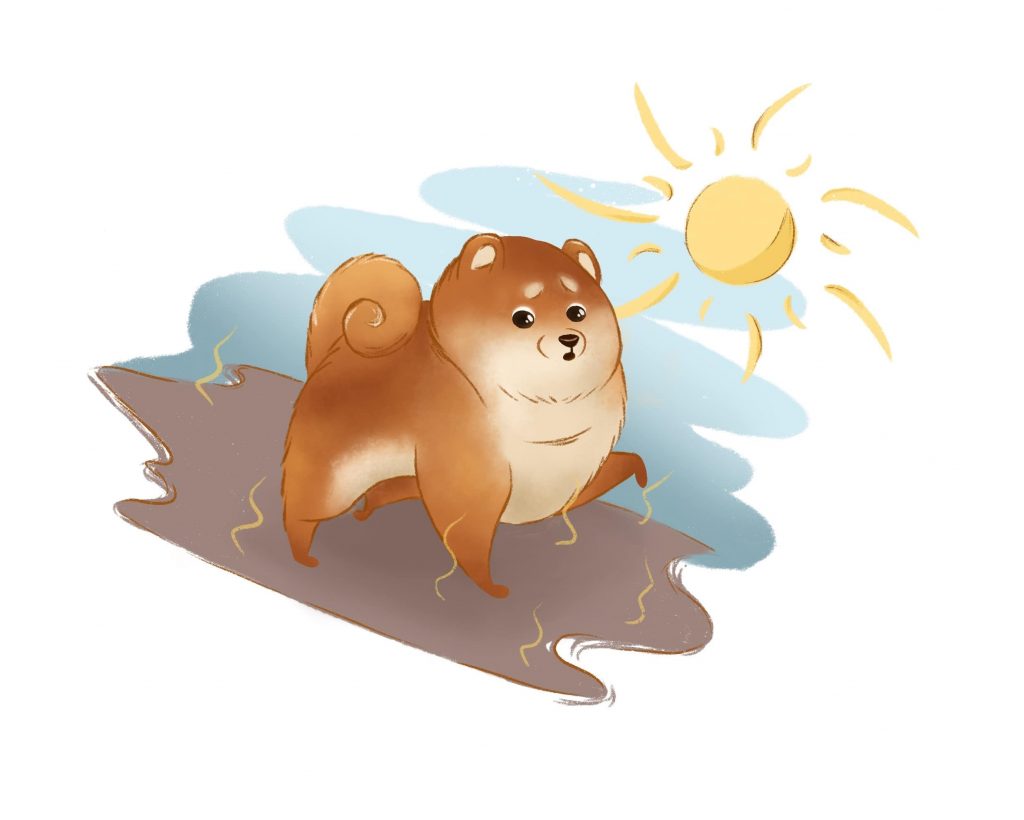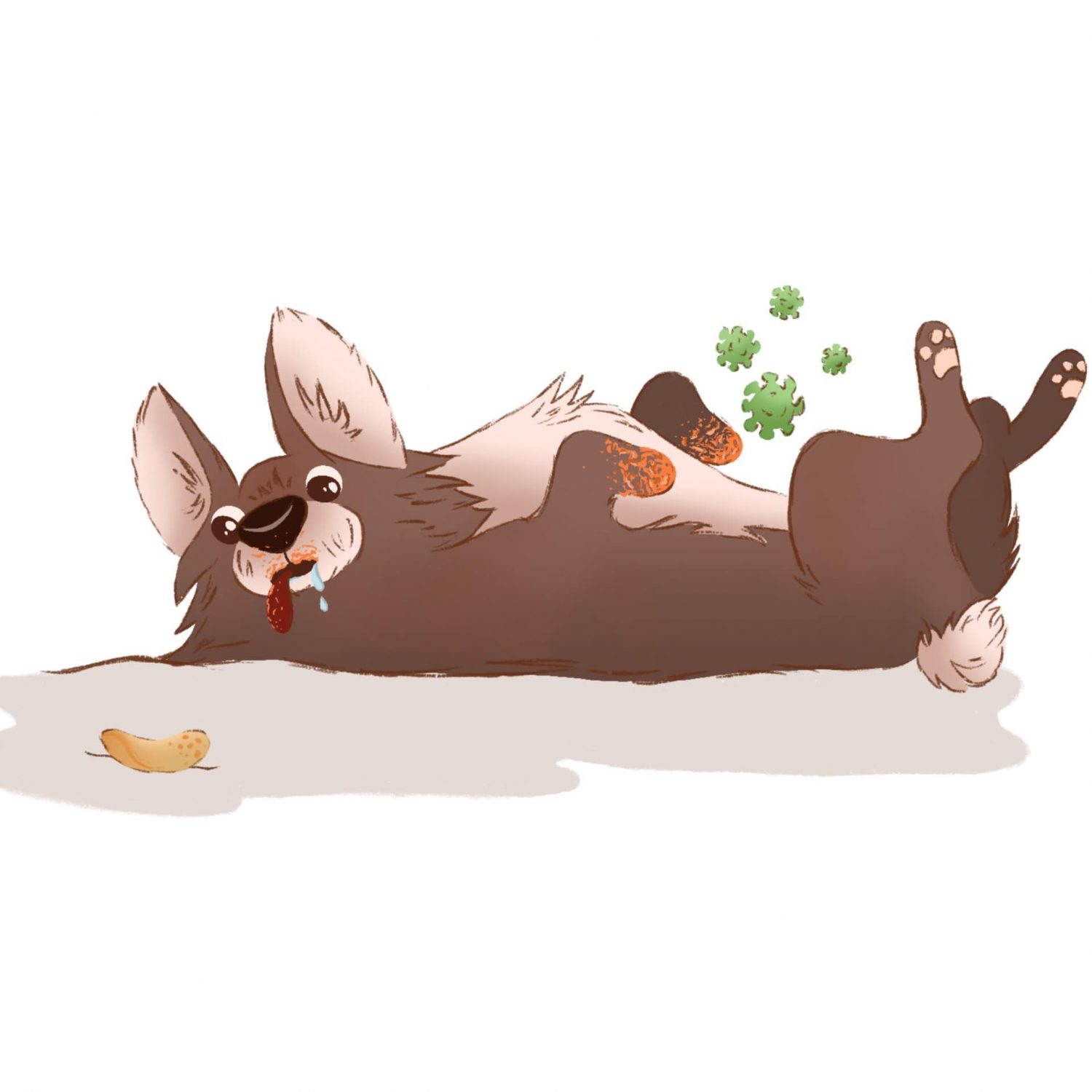Aside from the nose, there is no more important exposed body part on a dog than their paw pads. A canine’s feet are strong and resilient, but not impenetrable. Their texture makes them uniquely adaptable to several terrains they come across, however they are just as susceptible as humans to outside forces like temperature.

Most owners do not realize that dogs actually sweat through their feet, however this does little to remedy a blistering surface.
Burned paw pads refer to the negative components that affect the skin and surrounding membrane.
What Causes Burned Paws?
It goes without saying that the absolute worst sources for burned feet are those that absorb heat the most. Surfaces like asphalt, gravel and sand are the most common offenders, however even more ‘forgiving’ areas of grass or dirt can be just as damaging.
One myth that comes about with this type of ailment is that only prolonged exposure will result in a damaged paw. While that certainly increases the probability of such a problem to occur, even short walks or limited contact can be troublesome.
Some dog breeds are more inclined to have their pads adversely affected than others, particularly if they are larger.
Additionally, though it sounds counter-intuitive, snow and extreme cold temperatures can also cause paw burning. Similar to the sensation of ice scraping against your feet, the pain is sharp and dangerous.
? Hot surfaces are usually connected with sunny days. Be aware of dog nose sunburn too!
Signs To Look Out For
Though it would be helpful for our pets to simply vocalize their condition, that doesn’t mean they do not routinely give hints to the owner about how they are feeling and what is taking place.
Limping is usually the first indicator that feet have been altered enough to the point where your furry friend feels they cannot place the normal amount of pressure on them during impact.
If they are refusing to move altogether, the level of burn may be far more severe than initially thought.
The truth of the matter is that checking a canine’s paws with regularity should already be a part of your routine because they offer an enormous window into their well-being.
Red, blistered pads are almost assuredly damaged due to heat, and cracks will eventually lead to bacterial infections. The integrity of a paw’s membrane is crucial because it provides a defense to not only terrain, but foreign agents as well.
Discoloration of feet should at minimum put you on notice and induce you to think about what your pup is coming into contact with and for how long. Additionally, dogs will groom troublesome pads intensely, as saliva from their tongues provide temporary relief.
What To Do If You Can’t Figure Out What Caused Burned Paws
It is entirely possible that you end up in the subset of owners who simply cannot piece together how your pup obtained burned paws.
Perhaps your dog is never outside, or does not ever meet a surface that could absorb high temperatures. If this happens, and foot pads are still blistering and turning red, re-examine the treatment of your floors.
Are you using detergents and unnatural cleaners? In most cases where burned paws are not the result of forces outdoors, they derive from things like cleaning products and harmful solutions.
Remember, foot pads sweat, and this moisture will soak potentially damaging components. Moreover, this can cause an allergic reaction, which is even more worrisome than burned paws.
Is Your Dog A Swimmer?
If your dog likes to indulge in cooling off in the pool or lake, keep in mind this will soften their foot pads and cause them to be more sensitive to things like hot pavement. Water temporarily disarms the outer layer of a paw by manipulating the tissue to become less coarse.
Similar to when humans step out of the ocean onto hot sand, the delicateness of your skin has skyrocketed. It is prudent to be mindful to limit their footwork on damaging areas after this type of exposure, be it from rain, swimming, or otherwise.
How To Heal Your Dog’s Burned Paw Pads
Treatments To Avoid
Household items like aloe vera and petroleum jelly seem like a perfect ‘band-aid’ for an injured animal because they are quick and relatively inexpensive.
It is advisable to avoid this temptation, however, because they are not the wisest of avenues to take with a dog. A canine’s livelihood is dependent upon licking to provide necessary moisture to their feet (and noses as well). Ingesting the ingredients from these options will cause nausea and may lead your companion to stop eating. Vomiting and behavioral changes can also follow soon after application.
When To Consult A Veterinarian
Veterinarians are experts at their craft, and should most definitely be reached in cases of an emergency, but luckily even terrible cases of burned paws can be remedied at home.
That said, if your pet has lost part of the foot pad, or their behavior change is excessive enough to where they stop eating or having normal bowel movements, contacting a professional is recommended.
Temporary Solutions
If you are in a pinch and desire to provide your pooch some temporary relief, a cold compress is the optimal method to ease discomfort.
You can also do your dog a service by trimming back any hair that may be causing friction on the burned paw pads. The best you can do before providing the right moisturizing shield is to allow them to heal unencumbered where nothing is scratching the foot surface every step they take.
The Remedy
 Even though dogs can have a myriad of health problems, not everything is doom and gloom as an owner.
Even though dogs can have a myriad of health problems, not everything is doom and gloom as an owner.
Burned feet are very serious, but also one of the fastest and easiest to rectify.
The solution is to apply a moisturizer that is all natural and combines healing properties with protection to guarantee pad pain is gone forever.
Paws and Snout Premium Balm relieves affected paws within minutes, and restores them to pinnacle performance. Vitamins F, E and A collaborate with shea butter to provide man’s best friend with a flawless remedy to discomfort.
Effective all 52 weeks of the year, regardless of season, weather or location, it is harmless if licked and consistently performs in reducing wounds, irritation, and peeling. Being anti-inflammatory, it is helpful to even the most sensitive of dogs, and is a quick fix with long-lasting positive impact.



